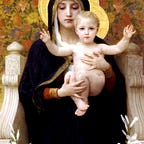The overlooked conflict of Krak des Chevaliers and the suffering of the Christians
As we’re driving from Damascus to the Valley of the Christians, I know i’m close to home when I can finally see Krak des Chevaliers on top of the mountain. My parents’ roots lay in this area of Syria and I take on every opportunity to visit as often as possible. Today, I’m writing about an overlooked conflict that caused Christians to flee, get martyred and could have possibly changed the demographics of the Levant.
Before getting into details I believe I should give you some historical facts and context about the location where everything takes place: the Valley of Christians.
The Valley of the Christians (‘’Wadi al Nasara’’) is a rural region located in Western Syria, not too far from the Lebanese border. It has a majority of Orthodox Christians inhabitans and a minority of Catholics spreaded over more than 32 villages. Traditionally a farmers’ area, which population has its roots in the Early Church. It’s no surprise that this place is a mountain-area. Due to persecution, Christian populations have historically sought refuge in the mountains of the Levant, seeking safer places to rebuild their churches and communities. While the majority of the Valleys is Christian, there is one particular village with a Sunni muslim population that has a minority of Christians: ‘’Al Husn’’, where you can find one of the most preserved crusader castle in the world; Krak des Chevaliers, built by the Hospitaller Order of Saint John Of Jerusalem in the 11th century.
It’s 2011, the start of the Syrian war. The Christian area of ‘’Al Husn’’ came under attack in the early 2012, when extremists turned against the Christian population, joining the rebels and islamic forces as an attempt to control the region and the medieval castle, which is of crucial strategic importance. To further their plans, the so-called rebels and their allied extremist groups joined forces with Lebanese islamic fighters who would cross the Lebanese-Syrian border. Together, dressed in black, and holding the flag of their “Islamic State” the individuals proudly posed and took pictures weapons in hand, pictures that they would later post all over social media for they had to let the world know that they captured the crusader fortress.
Attempts to gain control over Krak lead to heavy bombings and battles which would greatly impact the Christians population. This was notably illustrated by the kidnapping of local priests by extremist forces who sought to oblige the Syrian government to release captured “rebels”, but also by churches being ransacked and burnt to ashes by so-called jihadists, many of whom were foreigners. A sectarian conflict I would say, as controlling Krak wasn't the only end goal. Christians must leave by force, if not by killing them, then by making their lives unbearable. A tale as old as time.
Those tragic events forced the Christians in Al-Husn to seek refuge in neighboring villages. The feeling of safety, however, would last too little. The armed attacks and incursions eventually reached the very same villages some had found refuge, in.
‘’They want to kill us! We are talking about monsters!’’ as my relative who lives next to Al Husn, shouts in fear over the phone, ‘’We don’t know what to do anymore’’. It was months of fear, roadblocks to and from Al Husn as well as islamic groups continiously bragging about the number of people they killed or beheaded.
The Christian population of Al Husn wasn’t the only target, as the attacks on neighboring Christian villages continued. Months of attacks from the medieval castle made local men from the Christian villages organize themselves in militias and fight back. First alone and then alongside the Syrian military. The courageous men finally defeated and expelled the “jihadists” in 2014, effectively returning Wadi Al Nasara and the medieval fortress under government rule.
Nowadays, a government-controlled checkpoint guards the entrance to Al-Husn. The ride from the village to the fortress is a sad reminder of the tragedy, of the war that afflicted the community. The landscape is scared by the presence of nearly nothing, most having been destroyed. The Christian population in Al Husn has returned in small numbers but many of them stayed in the neighboring Christian villages or never returned.
Entering the neighboring Christian villages, you will see pictures of the men who died, martyred during this sectarian conflict. My local village is a good example, where the martyrs pictures are placed across the monastery. Among them, my father’s youngest brother.
There is however a light of hope. A 900 years-old church in Al Husn that had been destroyed in the early days of the conflict was restored in 2019. Isn’t that a beautiful testament to the perseverance and undying faith of Christians?
